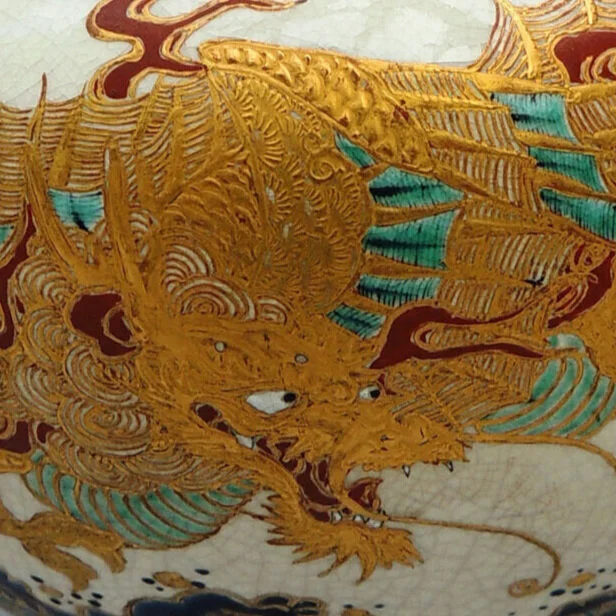Kinkozan of Kyoto
Meiji period, 19/20th century
1868-1912
Koro
A satsuma incense burner with phoenix handles and finial, on one face, is a bamboo framed panel of two people walking on a bridge, the bridge is situated in a valley of pine trees and a building in the distance. On the reverse side are two panels, one of pigeons and poppies and on the other two birds in flight below wisteria. The phoenix or “Ho-o” in Japan is one of the Chinese mythical beasts, it is used to represent the female element whereas the male is represented as the dragon.
The painting of this koro is very reminiscent of the artist Sozan. Sozan was an artist that painted or Kinkozan and specialised in highly detailed landscapes often painted in panels on satsuma wear. This could easily be a work by him or possibly a student of his.
Kinkozan workshop, Underwood & Underwood 1904.
Signed Kinkozan
150mm x 150mm








